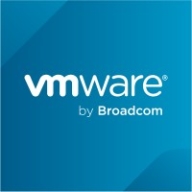

In the application delivery controller market, F5 BIG-IP LTM and VMware Avi Load Balancer compete tightly. F5 BIG-IP LTM appears to have the upper hand in robust features suited for complex environments, whereas Avi Load Balancer leads in deployment flexibility and user-friendly interface.
Features: F5 BIG-IP LTM shines with extensive load balancing, SSL offloading, and iRules capabilities. Its hardware performance and DNS management add to its strengths. VMware Avi Load Balancer offers deployment flexibility, an intuitive dashboard, and excellent analytics, making it strong in visibility and application monitoring.
Room for Improvement: F5 BIG-IP LTM users find costs prohibitive and seek improved cloud integration and a simplified interface. Avi requires better integration within VMware's ecosystem and enhanced user onboarding documentation.
Ease of Deployment and Customer Service: F5 BIG-IP LTM supports both on-premises and cloud deployment, but users face setup challenges, offset by robust community and technical support. Avi Load Balancer eases deployment across hybrid and public clouds, offering straightforward processes and effective support.
Pricing and ROI: F5 BIG-IP LTM is costly, justified by performance but high in maintenance, providing strong ROI in application enhancements. Avi Load Balancer presents competitive pricing, with flexible licensing attracting cost-conscious users.
The major return on investment is the security of our data.
I would rate the technical support of F5 BIG-IP Local Traffic Manager (LTM) nine out of ten.
Overall, my experience with F5 is very good compared to Radware.
The pricing of F5 BIG-IP Local Traffic Manager (LTM) is on the higher side compared to competitors, but it is worth it.
The product is costly.
The impact of SSL offloading on reducing server load and latency is very much positive because whatever traffic we receive, we encrypt at our F5 BIG-IP Local Traffic Manager (LTM) level, which has definitely reduced the additional load and SSL decryption load on the servers, so it has very much helped us and it is very smooth; it will not take much time and will not impact our regular traffic.
One of the most beneficial features of F5 BIG-IP Local Traffic Manager (LTM) is its ability to identify compromised traffic and its capabilities in authentication.
| Product | Market Share (%) |
|---|---|
| F5 BIG-IP Local Traffic Manager (LTM) | 15.3% |
| VMWare Avi Load Balancer | 5.6% |
| Other | 79.1% |


| Company Size | Count |
|---|---|
| Small Business | 62 |
| Midsize Enterprise | 32 |
| Large Enterprise | 85 |
| Company Size | Count |
|---|---|
| Small Business | 2 |
| Midsize Enterprise | 2 |
| Large Enterprise | 4 |
F5 BIG-IP LTM optimizes the speed and reliability of your apps via both network and application layers. Using real-time protocol and traffic management decisions based on app and server and connection management conditions, and TCP and content offloading, BIG-IP LTM dramatically improves application and infrastructure responsiveness. BIG-IP LTM's architecture includes protocol awareness to control traffic for the most important applications. BIG-IP LTM tracks the dynamic performance levels of servers and delivers SSL performance and visibility for inbound and outbound traffic, to protect the user experience by encrypting everything from the client to the server.
BIG-IP LTM provides enterprise-class Application Delivery Controller (ADC). You get granular layer 7 control, SSL offloading and acceleration capabilities, and advanced scaling technologies that deliver performance and reliability on-demand. The highly optimized TCP/IP stack combines TCP/IP techniques and improvements in the latest RFCs with extensions to minimize the effect of congestion and packet loss and recovery. Independent testing tools and customer experiences show LTM's TCP stack delivers up to a 2x performance gain for users and a 4x increase in bandwidth efficiency.
Avi Networks Software Load Balancer is an application delivery controller (ADC) platform. The solution provides scalable application delivery across any infrastructure and allows your organization to deliver multi-cloud application services, such as load balancing, autoscaling, application security, container networking, and web application firewall. It is designed with 100% software load balancing to ensure a fast and secure application experience. Additionally, Avi Networks Software Load Balancer offers elasticity and delivers intelligence across any environment.
The Avi Networks Software Load Balancer is unique because
Avi Networks Software Load Balancer Product Highlights
Avi Networks Software Load Balancer Features
Avi Networks Software Load Balancer has many valuable key features. Some of the most useful ones include:
Avi Networks Software Load Balancer Benefits
There are many benefits to implementing Avi Networks Software Load Balancer. Some of the biggest advantages the solution offers include:
We monitor all Application Delivery Controllers (ADC) reviews to prevent fraudulent reviews and keep review quality high. We do not post reviews by company employees or direct competitors. We validate each review for authenticity via cross-reference with LinkedIn, and personal follow-up with the reviewer when necessary.